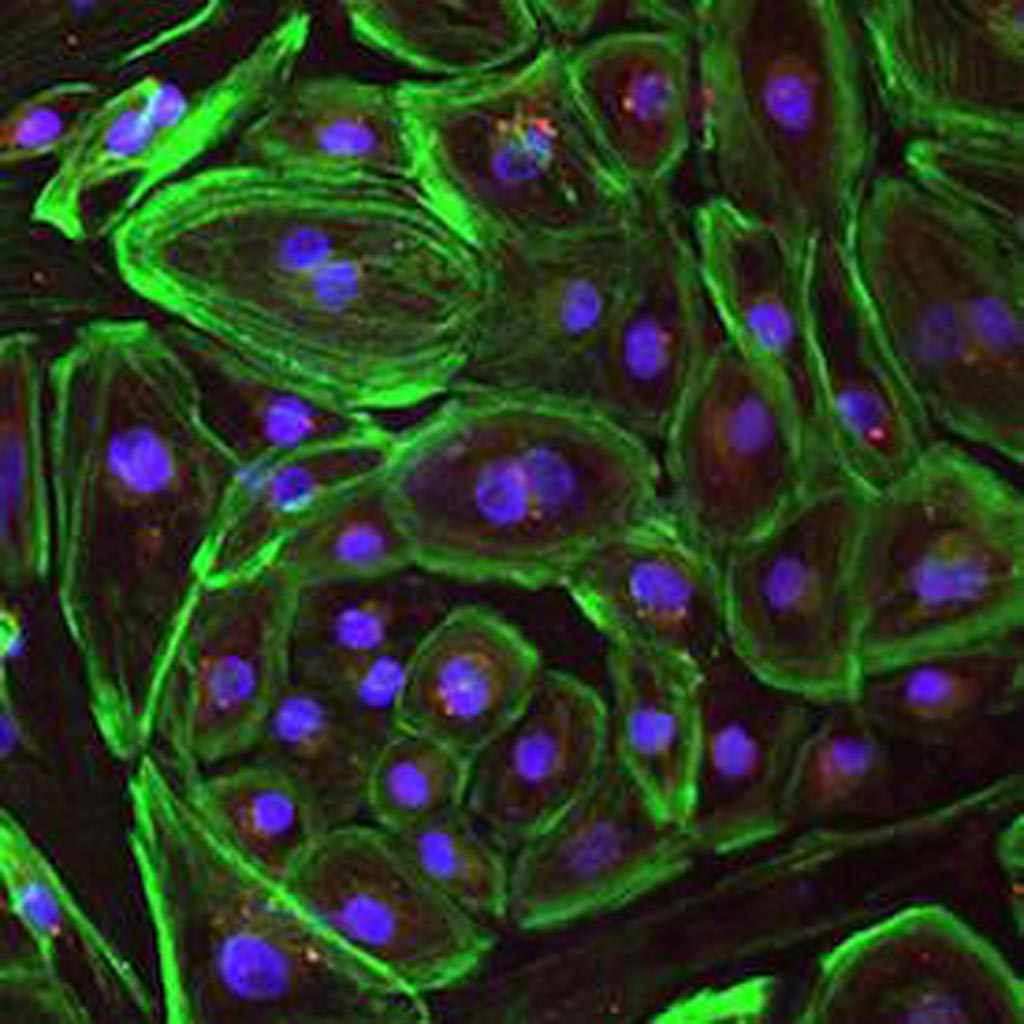Studies Indicate Gene Editing May Cure Mutation-linked Disorders
By LabMedica International staff writers
Posted on 23 Feb 2018
Results of a series of proof-of-concept studies suggest that the CRISPR/Cas9 gene-editing tool might be used to correct mutation-related disorders such as Duchenne muscular dystrophy.Posted on 23 Feb 2018
Duchenne muscular dystrophy (DMD) is caused by mutations in the gene that encodes dystrophin, a protein crucial for maintaining muscle cell integrity and function, and the subsequent disruption of the dystrophin-associated protein complex (DAPC). There are more than 3000 different mutations in the X-chromosome-linked dystrophin gene, and the disease effects about one of every 3,500 boys whose functioning of cardiac and skeletal muscle is so degraded that they die usually before reaching the age of 30. The majority of DMD mutations are deletions that prematurely terminate the dystrophin protein.

Image: A photomicrograph showing heart muscle cells that lack the dystrophin molecule (Photo courtesy of the University of Texas Southwestern Medical Center).
CRISPR/Cas9 is regarded as the cutting edge of molecular biology technology. CRISPRs (clustered regularly interspaced short palindromic repeats) are segments of prokaryotic DNA containing short repetitions of base sequences. Each repetition is followed by short segments of "spacer DNA" from previous exposures to a bacterial virus or plasmid. Since 2013, the CRISPR/Cas9 system has been used in research for gene editing (adding, disrupting, or changing the sequence of specific genes) and gene regulation. By delivering the Cas9 enzyme and appropriate guide RNAs (sgRNAs) into a cell, the organism's genome can be cut at any desired location. The conventional CRISPR/Cas9 system is composed of two parts: the Cas9 enzyme, which cleaves the DNA molecule and specific RNA guides that shepherd the Cas9 protein to the target gene on a DNA strand. Efficient genome editing with Cas9-sgRNA in vivo has required the use of viral delivery systems, which have limitations for clinical applications.
Most DMD mutations are clustered in “hotspots”. There is a serendipitous correspondence between the eukaryotic splice acceptor and splice donor sequences and the protospacer adjacent motif sequences that govern prokaryotic CRISPR/Cas9 target gene recognition and cleavage. Taking advantage of this correspondence, investigators at the University of Texas Southwestern Medical Center (Dallas, USA) screened for optimal guide RNAs capable of introducing insertion/deletion (indel) mutations by nonhomologous end joining that abolished conserved RNA splice sites in 12 exons that potentially allowed skipping of the most common mutant or out-of-frame DMD exons within or nearby mutational hotspots. This correction of DMD mutations by exon skipping was referred to as myoediting.
In proof-of-concept studies the investigators performed myoediting in representative induced pluripotent stem cells from multiple patients with large deletions, point mutations, or duplications within the DMD gene and efficiently restored dystrophin protein expression in derivative cardiomyocytes. In three-dimensional engineered heart muscle (EHM), myoediting of DMD mutations restored dystrophin expression and the corresponding mechanical force of contraction. Correcting only a subset of cardiomyocytes (30 to 50%) was sufficient to rescue the mutant EHM phenotype to near-normal control levels.
The results obtained by these studies enabled the investigators to conclude that abolishing conserved RNA splicing acceptor/donor sites and directing the splicing machinery to skip mutant or out-of-frame exons through myoediting allowed correction of the cardiac abnormalities associated with DMD by eliminating the underlying genetic basis of the disease.
Related Links:
University of Texas Southwestern Medical Center













